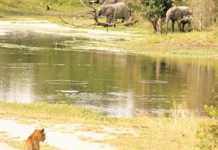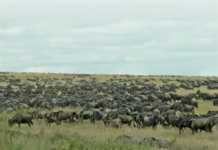In my article of 2 May, I wrote about the potential of biological farming to transform the timber industry. I was tempted to say ‘revolutionise’ instead of ‘transform’, because, although it might only apply to certain types of plantation, the potential is far greater than generally believed. The science of biological soil fertility in the timber industry is way behind that which is rapidly gaining ground in cash crop farming.
Before I take you to a timber farm where some of the principles of biological farming are being applied, let’s go over the principles on which to build a more profitable timber enterprise. First, here is my definition of biological farming: the activating and harnessing of biological energy for the profitable production of nutrient-dense crops on a sustainable basis.
How does this work in timber farming? It all boils down to developing an energetic, self-sustaining plant/soil ecosystem. The plant feeds soil micro-organisms with energy derived from photosynthesis. The micro-organisms use this energy to solubilise ‘locked-up’ soil minerals that trees require for growth. The trick is to create the conditions in which micro-organisms can flourish.
To do this, lime correctly and apply other necessary soil minerals. Then plant a robust, long-living legume/grass pasture as ‘living mulch’. Finally, introduce animals to complete the soil fertility building circle.
All of this may result in an increase of 30% to 50% in production above that currently achieved on infertile soils. The income generated by cattle that graze the pasture will also greatly increase the net profitability per hectare.
Timber and cattle in harmony
Johan van Aardt owns a timber operation in the eastern highland of Mpumalanga. He farms on 1 000ha, 800ha of which is planted to timber. He runs 300 cows and is often complimented on their excellent condition. A large part of the grazing is derived from the wet vlei areas that border the plantations. Johan’s camp system is planned to accommodate high-density grazing and the vlei areas are not camped separately, thus cattle move freely between the in-plantation grazing and the vlei.
Fire is the greatest threat to the timber, but Johan claims that this danger is drastically reduced by grazing the grass and weeds that grow between the trees. He also burns off the grass between the trees in autumn, doing so at night when the humidity is at its highest. This stimulates regrowth, enticing the animals deep into the plantations. This way, the fuel load in the plantation in winter is reduced to near zero.
The ideal tree for forestry
The most suitable type of tree for agro-forestry is Pinus elliottii, commonly called slash pine. It is hardy, well-suited to poor and wet soils, and is also resistant to the root diseases that occur in P. patula, the patula pine. Slash pine is also fire-tolerant. It has upright needles, and therefore more sunlight reaches the ground than with any other common timber tree. There is enough sunlight to grow pasture up to harvesting, which takes place when the trees are eight to 10 years old.
Johan is now planting P. elliottii at a spacing of 3m x 2,5m. This allows a tractor to move easily down the rows, which fits in with my plans to replace the indigenous grasses with a mixed legume/grass pasture after correctly mineralising the soil.
Johan has adopted the ingenious practice of grazing new plantations in the first winter after planting! This is his standard practice to fill in the gaps from trees that die from natural causes. He feels that replacing a few is worth the cost and effort, as he gains grazing and has better fire protection.
The next step is to plant soil fertility building pastures; these will have the potential to treble the current capacity.
Biological agro-forestry is a win, win, win practice that should be adopted by more farmers.
John Fair heads up Fair’s Biofarm Assist, and can be contacted on 058 622 3585 or [email protected].












